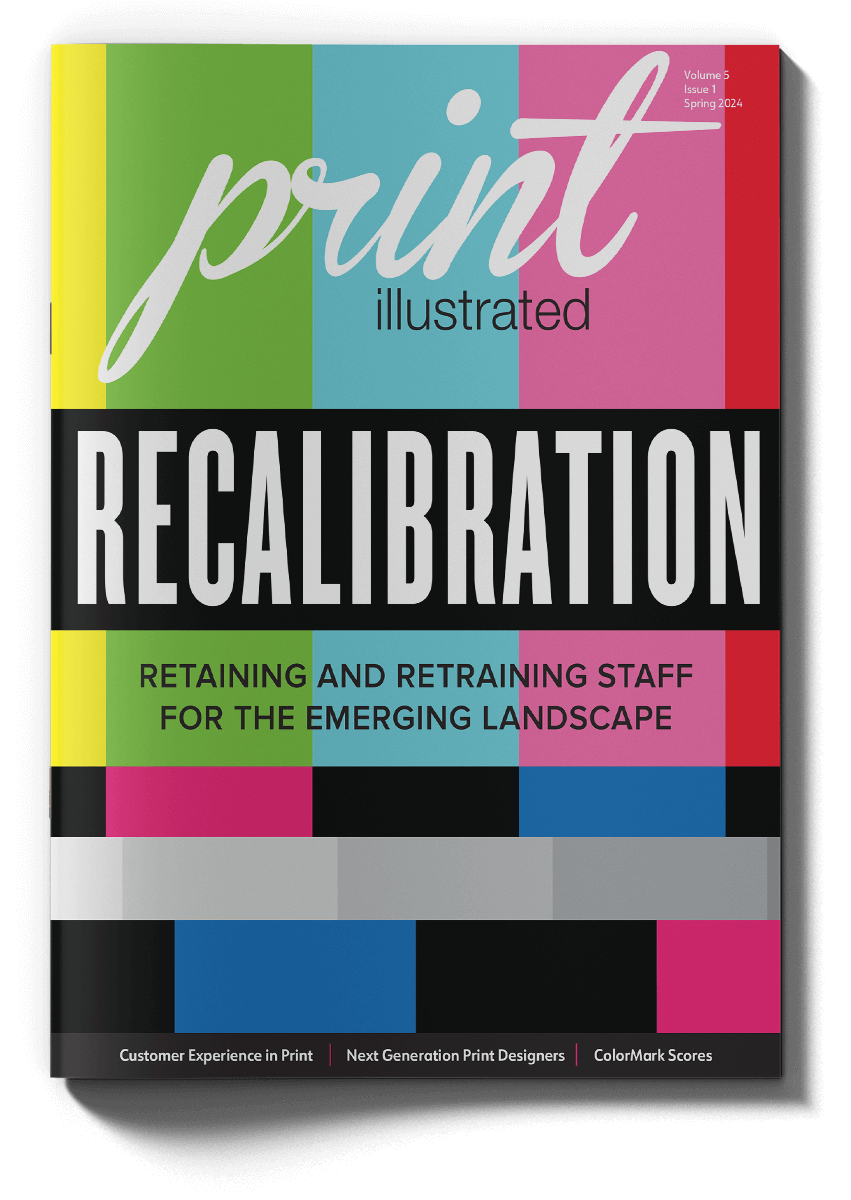Would I buy from my own company?
It’s a question that Sarah Barr has pondered a lot. As the owner of Konhaus Print & Marketing, she admits to constantly putting herself in her buyer’s shows, often wondering if the roles were reversed, would she make the decision to buy. “It’s that mindset that drives a lot of the decisions we make about the customer experience within our business.”
There are a number of factors that go along with those decisions. For example, the Konhaus team pays close attention to the generation of each individual customer. They work hard on understanding their habits and communication preferences. With that comes the responsibility to always do their best to meet customer expectations. The key is to understand how each generation takes every step throughout its buying journey, from sales to final project completion.
“You have to listen to your customers’ needs, show empathy for their situations and use as much personalization as possible,” says Barr, who often refers to the book, “Would You Buy from You?: Your Brand Makes the Difference,” from sales and brand positioning thought leader Ryan Sauers. “I’m fortunate that every single one of our employees understands this for each of our customers. It allows us to take great care of their needs.”
“The ability to get closer with customers and more seamlessly ingest and report back data is the opportunity for positive CX.“
– Brian Badillo, VP of Vertical Strategy, Vericast
In today’s ever-evolving consumer landscape, trying to get a handle on who your consumers are, what they want and how they make the decision to buy is critical, to say the least. According to “The Zendesk Customer Experience Trends Report,” more than 50% of consumers say they would switch to a competitor after just one bad experience with a brand. In addition, 59% of consumers believe the way they interact with a company will completely change within two years.
The numbers are telling that the more streamlined the consumer experience (CX), the more likely the customer is to come back to you to make a repeat purchase. “You have to listen to what your customers are saying—it’s a very important role,” Barr says. “We always want to listen to what our customers say to ensure we are providing the best experience possible.”

And the print goes on…
When it comes to evolving customer expectations, the commercial print industry, like many other legacy industries, is witnessing a significant shift in customer expectations, primarily driven by the speed of the modern world and the makeup of today’s educated and fickle buyer. Thanks to the convenience of digital transactions—the Amazon effect—expectations continue to rise. Add in the digital lean with much of today’s marketing dollars, and the complexity and details of print can become a turnoff with today’s buyers.
“With a proliferation of web applications available to manage just about any part of our personal lives, the friction involved in the traditional methods of order capture and project management has now become an inconvenience,” says Brian Badillo, VP of Vertical Strategy for Vericast.
Badillo believes that the customer experience on the print side hinges on the industry’s ability to provide real-time communication, customization and reliability. This includes providing instant access to important information such as project status and shipping details, which can significantly enhance the overall customer experience.
“The answer to whether working with your company is easy or not is the ultimate metric for positive CX,” Badillo says. “I like to think of it as the number of human layers involved, plus the time it takes to access information, is the equation that determines positive versus negative experience—less is always better than more.”
Not unlike any industry, the most effective strategies for creating positive customer experiences revolve around speed to information, i.e., how accessible is information and/or how quickly can you provide it?
In addition, integrating some of the spate of digital technologies, such as online ordering and customer portals, is making it easier for print customers to interact with print service providers. But, as Badillo warns, this is no longer a differentiator. “It’s table stakes, and now seen as a must have. The ability to get closer with customers and more seamlessly ingest and report back data is the opportunity for positive CX. Custom data feeds and APIs have now become the standard for driving efficient transactions which, as mentioned earlier, eliminate people and time.”
“You have to listen to what your customers are saying—it’s a very important role. We always want to listen to what our customers say to ensure we are providing the best experience possible.”
– Sarah Barr, Owner, Konhaus Print & Marketing
In the race for optimal efficiency by industries everywhere, the next evolution will be the integration of AI and predictive analytics (See sidebar, “10 CX trends to watch in 2024”). The ability to help inform better decisions and associated spend is the key.
“These technologies offer predictive insights into customer preferences, enabling proactive customization of print solutions,” Badillo says. “The expanded use of chatbots is also anticipated to move beyond customer service, providing strategic insights and trends that inform future print campaigns and decisions.”
In the world of print, CX and how printers face it, stands as a pivotal determinant of success—one that will continue to shape perceptions and foster customer loyalty. As printers navigate their way through the digital age, prioritizing CX will help ensure that each interaction, from design to delivery, leaves a lasting impression that resonates with customers and drives sustained engagement and growth.
10 CX trends to watch in 2024
AI and intelligent experiences
- Generative AI will accelerate the delivery of more humanized journeys.
- Chatbots are rapidly transforming into digital agents that can do more.
- Disconnect grows between CX leaders and agents on AI-related strategy and tools.
- AI transparency and decisioning are the new rule, not the exception.
Data and trustworthy experiences
- Businesses are more focused on instantly modifying user experiences.
- CX leaders are the new drivers of data privacy related to AI and personalization.
- Security is no longer an add-on, but seamlessly incorporated through the customer journey.
Next Gen and immersive experiences
- Live and immersive experiences are heavily influencing online shopping.
- Voice is carving out a more advanced role focused on handling complex issues.
- Predictive agent management tools are eclipsing traditional methods.

